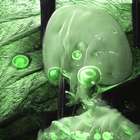Bitesize Lecture with SymbioticA
SymbioticA is an artistic laboratory dedicated to the research, learning and critique of the life sciences. Operating since 2000, SymbioticA is the first research laboratory of its kind, enabling artists to engage in wet biology practices in a biological science department. SymbioticA’s artists have exhibited their pioneering works world wide, best known for their work on Stelarc’s Extra Ear and the Welcome Trust awarded Pig Wings. It is FoAM’s pleasure to bring these renowned artists and researchers to Brussels and Belgium for the first time.
Rapid developments in the life sciences and its applied technologies have created new ways for beings to come into the world, and new categories of existence that are challenging the order of the world. This requires us humans to rethink our understandings and our relationships with our own identity/body, other animals and the environment, as well as the concept of life itself.
Modern biology is a branch/offshoot of the discipline of Natural History which originally constructed its knowledge by collections, classification and observation. In some respects the shift from the Cabinet of Curiosity to the Natural History Museum display embodies this transformation. Carl Linnaeus (1707-1778) developed one of the most widely known and still widely used biological taxonomies which is based on the gathering and interpretation of phenotypic information; the discovery of DNA created a reductionist system based on the genotypic classification of the living world. Both systems carry their advantages as well as biases and ideologies and both systems are being even more severely challenged by recent developments in biotechnology. Ironically, a new cabinet of curiosities, containing living and partially living entities that do no confirm to any of these classifications, is being created/constructed in the scientific laboratories.
The growing number of “labmade” life forms, either modified living organisms or different combinations of modified living fragments such as cell-lines and tissue (which we refer to as sub-life or sub-organisms), requires special attention. In pharmacological factories, research universities, and other technologically driven institutions there already exists a mass of disassociated living cells and tissues (sub-life) in the thousands of tons. These fragments do not fall under current biological or cultural classifications. We created the Tissue Culture & Art Project (TC&A) in 1996 mainly as a way to define this category of life and, at the same time, as an attempt to destabilize some of the rooted perceptions of the classification of living beings. We see TC&A, and our other attempts to grow aspects of the extended body, as an amalgamation of the extended human phenotype – a disembodied body that is unified in living fragments, and an ontological device for re-examining current taxonomies and hierarchical perceptions of life. These ideas will be illustrated through our recent proposed artistic project NoArk: A Vessel for Neo/sub Life. NoArk is an attempt to develop this idea further by collecting and growing into one “blob” a collection of these sub-lives and neo-lives while engaging with the notion of the collection of parts that constitutes a whole.
Oron Catts is the Artistic director of SymbioticA, the Art and Science Collaborative Research Laboratory in the School of Anatomy and Human Biology, the University of Western Australia. Ionat Zurr is the Academic Coordinator of SymbioticA. Both, Oron and Ionat are artists, researchers and curators who have exhibited and published internationally. They specialize in using tissues as a medium for artistic investigation.
- http://www.symbiotica.uwa.edu.au/


